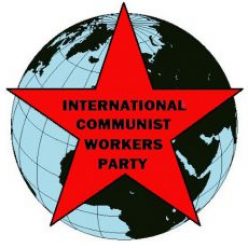
NOTE: This article is a comrade’s contribution to our understanding of political economy. We encourage collectives to discuss it in relation to their work and to write letters about these ideas and any questions comrades have.
The main goal of every capitalist is to make the highest profit. For this, they cut labor costs every way they can: replacing workers with machines, lowering wages, laying off and firing workers, outsourcing jobs, speeding up work, moving factories to countries with lower wages, dividing workers through racism. All of these hurt all workers. But none of them fix the capitalists’ deeper problem: the rate of profit keeps falling.
Profits come from workers’ labor power. Capitalists make money by paying workers less than the value they create. Trying to maintain their rate of profit, they pay less and less. When they replace workers with machines, they might boost profits for a while. But in the long run their rate of profit drops. Machines don’t create profit—only human labor does.
A machine in Bangladesh will on average produce the same as the machine in USA; but a boss can extract more profit from a worker in Bangladesh than in the USA.
Marx believed that the falling rate of profit caused by automation is one of the most important ideas in political economy. This decline leads to economic crises, shrinking markets, mass unemployment, fiercer competition, and wars. Capitalism’s contradictions create the conditions for its downfall. But it’s up to the working class—capitalism’s gravediggers—to consciously end it.
Some writers attack this idea of the falling rate of profit as false or illogical. They are wrong. There is mounting evidence that it is correct.
A recent article* explained how the falling rate of profit plays out in the real world. Some Marxist economists studied data from 43 countries between 2000 and 2014. They found that the average profit rate declined worldwide in that time as automation increased.
They show that in today’s “advanced” capitalist countries, there is now more unproductive capital (money tied up in finance, real estate, and speculation) than in “less developed” countries. They also highlight the dramatic rise of productive labor in China, compared to its sharp decline in the US, Japan, and Europe:
“In just 15 years, China rapidly increased its weight in global value added from 5.3 to 19.3%. Meanwhile, the share of the United States fell from 30.1 to 22.3%, Japan dropped from 16.3 to 6.7%, and Germany slipped from 6.6 to 6.0%.
“China also became the country with the greatest share of the global capital stock in productive activity, rising from 6.0 to 23.6%.
In contrast, the United States fell from 24.8 to 17.4%, Japan from 21.2 to 8.8%, and Germany from 6.5 to 4.6%. Not surprisingly, the US dominated in unproductive activity—finance, real estate, and government services.”
Imperialist China’s “success” includes over 700 million Chinese people living in dire poverty.
The article also shows that the rate of surplus value (how much profit bosses steal from workers, compared to wages) is actually higher in poor countries than in rich ones. That’s because even when productivity is somewhat lower, wages are much lower in the Global South. For example, productivity in India is about 5% of the US level, but wages are only 2% of the US level. Workers in India are paid even less for the value they create, which makes capitalists’ profits higher.
Capitalists in more industrialized countries try to halt falling profits by shifting production to low-wage countries and cutting wages and benefits at home. But in the long run, these attacks can’t prevent their declining profits. They only spread the contradictions.
The falling rate of profit and the fact that fewer workers are producing more goods creates a crisis of overproduction. More products are made than can be sold at a profit. Workers can’t buy what they produce.
Capitalists would rather destroy surplus goods than give them to people who desperately need them. Giving them away would “cheapen” them. Their rule: “Sell it for a profit or let it rot”—even if workers starve.
As markets shrink, the competition among capitalists — especially between imperialist powers — becomes fiercer. For them, this is a life-or-death struggle for market share. And it isn’t limited to boardrooms or trade deals. It eventually explodes into wars, where rival capitalists destroy each other’s factories and the workers who operate them.
The only solution is to end the profit system itself. That means revolution to replace capitalism with a system based on cooperation, not competition—where production is organized to meet human needs, not for profits. Without money, wages, exploitation, or imperialist wars. Communism.
In communism, goods won’t be bought or sold so there can be no “crisis of overproduction.” We will all benefit from producing an abundance of what we need to improve our quality of life!
* “Was Marx right? Development and exploitation in 43 countries, 2000–2014,” Tomás N. Rotta and Rishabh Kumar. Structural Change and Economic Dynamics, Vol. 69, June 2024. https://www.sciencedirect.com/science/article/pii/S0954349X23001753

